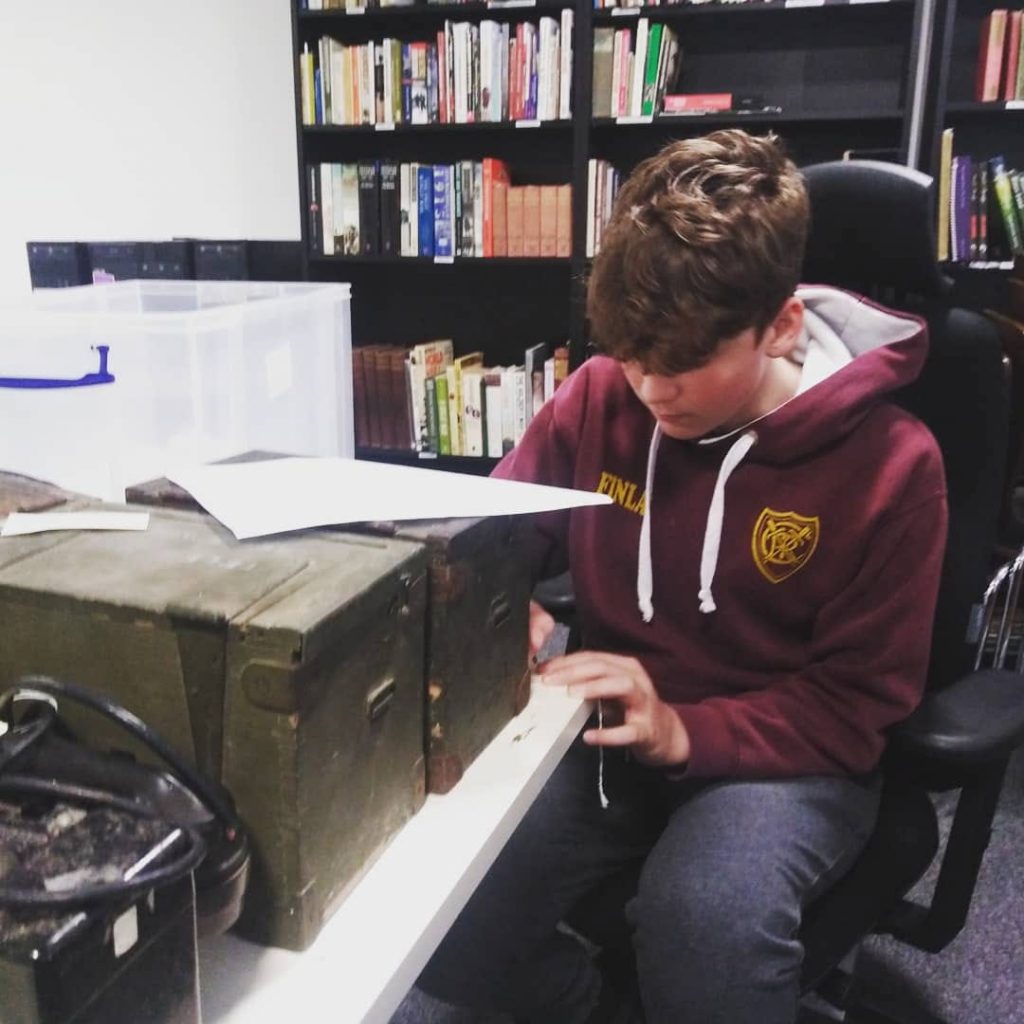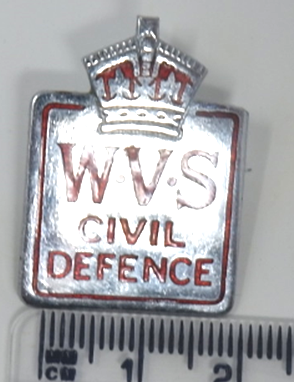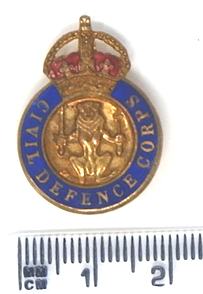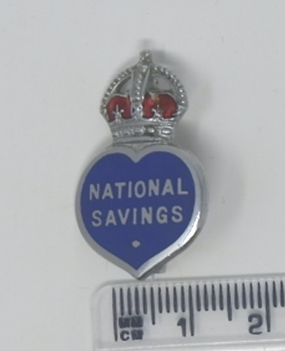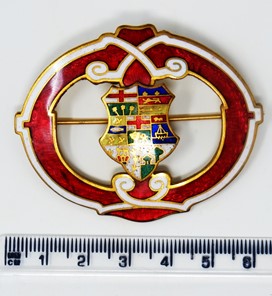Worker of the Week is a weekly blogpost series which will highlight one of the workers at H.M. Gretna our volunteers have researched for The Miracle Workers Project. This is an exciting project that aims to centralise all of the 30,000 people who worked at Gretna during World War One. If you want to find out more, or if you’d like to get involved in the project, please email laura@devilsporridge.org.uk. This week, volunteer Marilyn shares her research on George Ernest Syms.
George Ernest Syms was born on 29th July 1890 in Colombo, Ceylon ( 1911 Census ).The Civil Engineer records tell us that he was of Anglo-Dutch- Burgher nationality. According to Wikipedia,” the Burgher people are a small Eurasion ethnic group descended from Portuguese, Dutch, British and other European men who settled and developed relationships with Sri Lankan women.”
George was the second child of 5 , only 3 of whom survived beyond infancy. His sister Vida was born in 1888, his brother named after their father as Samuel Henry Syms (3rd) and twin boys. One twin died at birth and one died aged 2 ( Public member tree )
They were the children of Stephen Henry Syms ( Jnr) and Adolphina Henrietta Fiescher. Stephen had emigrated from Berry Pomery , Devon in 1883 aged 19 following the death of his mother Caroline nee Crispin. Samuel is described as a farmer. He was the son of a butcher and his mother had spent time in the Workhouse from the age of 5. There is very little information concerning Adolphina. Stephen and daughter Vida certainly sailed 1st class to Colombo in 1907 aboard the “ Oraya” when he was 44 and was described as a farmer. ( Ships passenger list)
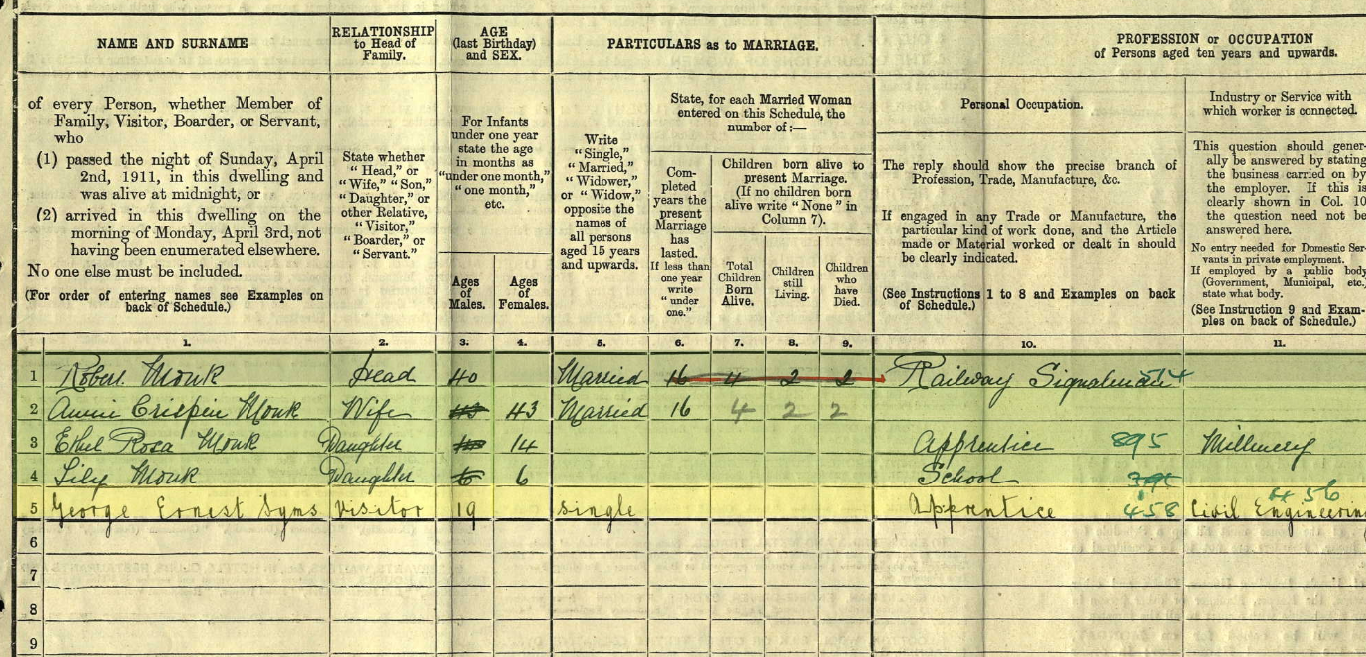
George appears in the 1911 census as a visitor. He is a civil engineering apprentice.
The 1911 census for England and Wales shows George Ernest as a visitor at 65 Vicarage Road, Willesdon, London aged 19. He is shown as an apprentice associated with civil engineering, born in Ceylon and a British Citizen. This is all written in his own hand. The head of household was Robert Monk , 40 , a railway signalman, Mrs Annie Crispin Monk, 43. Daughters Ethel Rosa, 14 a milliners apprentice and Lily. These seemingly were his aunt , uncle and cousins – Annie was his father Stephen’s sister. It is unclear why the relationship is not stated where appropriate on the census form rather than merely visitor.
In 1911, the girl he was to marry in the summer of 1918 , Otellie Sybil Corteling, was living at 4 Frances Cottages, Forge Lane, Mid Higham, Kent . The census shows that it had 4 rooms and 7 occupants. Albert Thomas Wilson, 45, widower, Railway pensioner and insurance agent born in Higham, Kent, Francis Laurie Ambrose Corteling, 21, stepson, Uralite labourer, born Haputate, Ceylon, naturalized in 1909 .Otellie Sybil Corteling, 19, stepdaughter born in Kandy, Ceylon. Albert Denis Wilson 11, Francis Ethel 9, Doris Blanche 6, Phyllis Doreen 3 and a half all born in Colombo. Otellie’s late father Laurie Stephen Corteling was a medical practitioner. Little background information can be found about him. Her mother , Frances Winifred Ambrose as a widow with 2 children married for a second time . It is possible that Albert Wilson being a railway signalman, and George’s father Samuel Syms being a railway guard knew each other in Ceylon. George’s uncle Robert Monk in London worked as a Railway signalman also. It is unclear when this family moved back to England but it must have been between 1907 and 1909 as the youngest child was born in 1907 and Otellie’s brother became naturalized in 1909.
By March 1912 George is listed as a student in the UK, Civil Engineer lists him as living at Mrs Appleby, 13 Great George Street, Hillhead, Glasgow. The Aberdeen Press and Journal reported on Saturday 6th April 1912 :- “ INSTITUTION OF CIVIL ENGINEERS. At the ordinary meeting the Institution of Civil Engineers following Scottish candidates were admitted students: George Ernest Syms…”
The Dumfries and Galloway Standard Wednesday 19th April 1916 reported that George had been sent to the UK by his parents from Ceylon to obtain training as a civil engineer. We know that he was in London in 1911 – Census evidence.
George’s military record shows that ”WR509860 Syms G E attested” ( enrolled as ready for military service) “on 8-3-16”
We know from the Dumfries and Galloway Standard dated as above that he was living at 1 English Street , Annan in April 1916 and was employed by Messrs P & W Anderson , H M contractors at Gretna. That “he belonged to Ceylon and was here to study. He had completed 2 years of his course but owing to the outbreak of war had been unable to complete his training or get back home. ( H M Factory Gretna construction began November 1915 and production started April 1916 ) This latter date coincides with George attesting and then appealing to a court as reported in the D and G Standard. “He was prepared to follow the same course taken by other tribunals towards native students of the British Empire. The local tribunal pointed out that the appellant had stated to them that he had completed his training , and had acted two years as an assistant engineer… Mr ‘Bainic, clerk tribunal; would have been exempt had re- mained at university. That is exemption under the Aet. The Chairman (to appellant): Supposing you did off the war ,just now, you can go back to that employment without any difficulty, I suppose. Temporary exemption was granted until 17th October. “
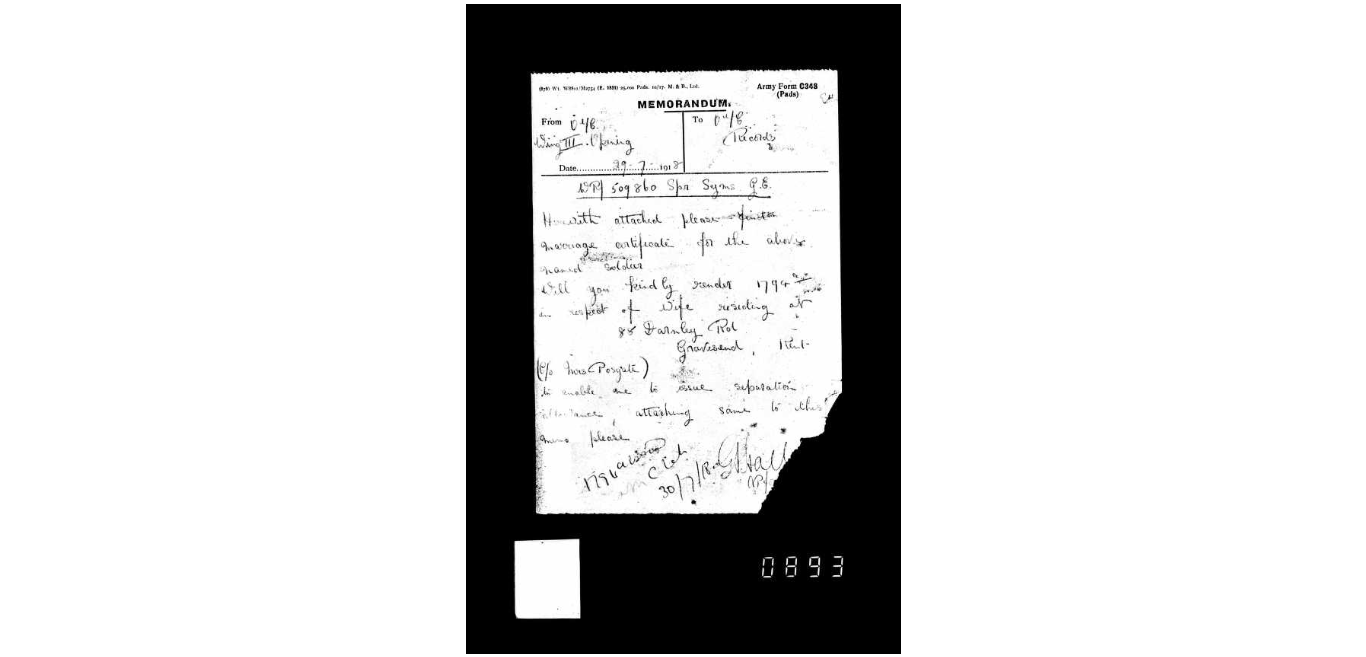
An image of George’s war record, regarding his marriage in 1918.
By November 1916, George had moved back to London and was living at 73 Landsdowne Grove, Neasdon with his Aunt, Annie Monk according to his Military record. His civil engineer record shows an application for associate membership signed on 23rd November 1916 and stating that “since completing his training he had worked as a civil engineer for 5 years and is at present preparing for associate exams”. This makes the dates recorded from his appeal even more woolly, the years simply do not equate unless he was working whilst studying and he was referring to his first qualification.
We know that on 7th December 1916, George’s father, Samuel, aged 53, now described as a railway guard, travelled alone, 1st Class aboard “ City Of Exeter” of the City Shipping line from Liverpool to Colombo. Perhaps we can assume that he had been to visit and/or support his son following his tribunal and before he signed up. It is not clear when Samuel sailed inbound to England.
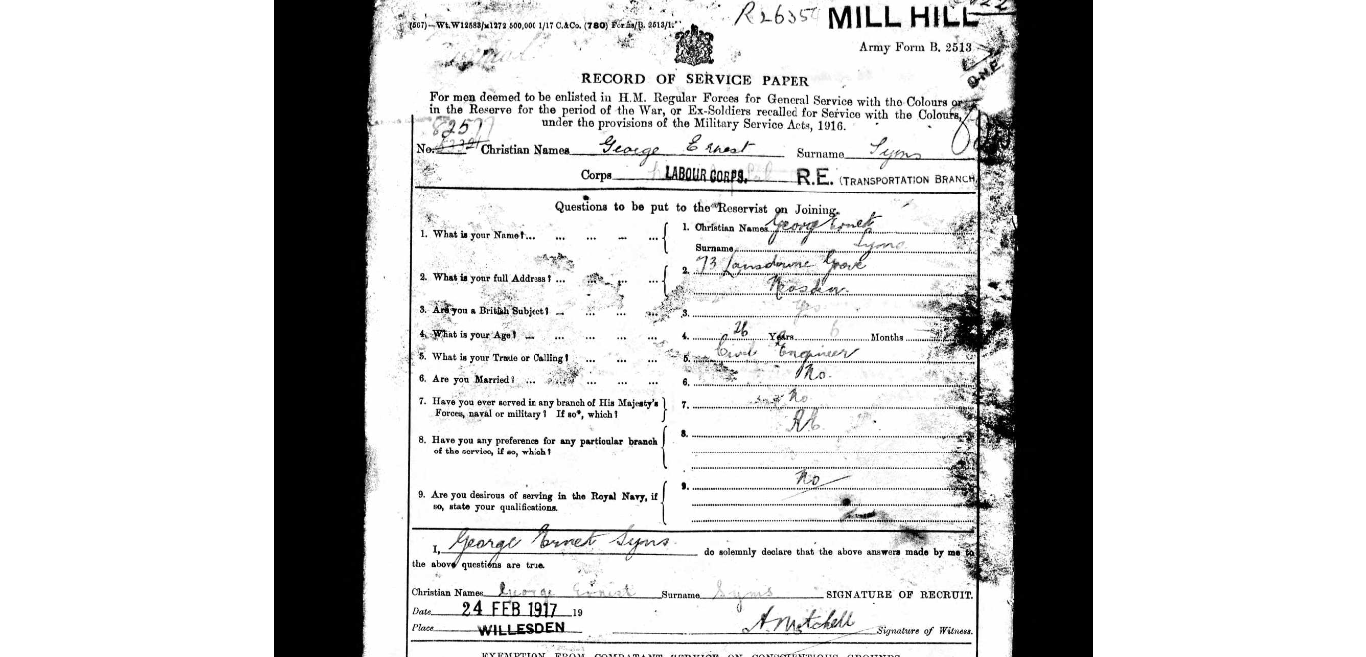 By 6th January 1917, George Ernest enlisted at Mill Hill, London. His Military record/medical record shows that he was 26 years and 150 days old, weighed 129 pounds ( just over 9 stone ), was vaccinated in infancy, his vision was 6/6 in both eyes. It also states that “ he has had asthma and has double hydrocele “–( fluid round the testicles). Under “ slight defects but not sufficient to cause rejection DAH “- disordered action of the heart.
By 6th January 1917, George Ernest enlisted at Mill Hill, London. His Military record/medical record shows that he was 26 years and 150 days old, weighed 129 pounds ( just over 9 stone ), was vaccinated in infancy, his vision was 6/6 in both eyes. It also states that “ he has had asthma and has double hydrocele “–( fluid round the testicles). Under “ slight defects but not sufficient to cause rejection DAH “- disordered action of the heart.
Also in his Military record dated 24th February 1917– passed as C1 – fit for home service only and assigned to Labour Corps RE ( Royal Engineers) transportation branch . The Labour Corps were only formed on 22nd February 1917 according to the Great War Forum. George was probably one of their first recruits. He is recorded as having transferred to 138th Labour Corps between 8th and 15th March 1917. Meanwhile, the Institute of Civil Engineers lists George as having been elected an associate member of the institute.
Some 9 months later he transferred to Royal Engineers-Docks on RE rate of pay. On his Posted trade and special qualifications form he is a draughtsman(Arch) Classification Superior. Rating 1 shilling and 8 pence per deum.
On the strength of this George married Otellie Sybil Corteling at Gravesend Ebenezer Wesleyan Chapel, Milton Road on 10th July 1918. Her address at the time was given as 88 Darnley Road Gravesend. More details regarding George emerge on this page of his Military record. We now know that he was 5ft 7 ins tall, his girth when fully expanded was 34” with a range of expansion of 2 “.Not a particularly large chap.
Their wedding Banns show that Otellie’s stepfather Albert Thomas Wilson and her brother Francis acted as witnesses and George’s address is Rosebank, Shorne, Kent His father is shown as a Rail Guard and Otellie’s father as Medical Practitioner , deceased. We can only assume that Otellie’s family and George’s family were acquainted in Ceylon prior to moving to Kent.
A handwritten “ Memo” records the amendment detail of the marriage to his military record dated 30th July. The newly weds are living at 88 Darnley Road, Gravesend.
Within a month, on 11th August 1918, Form B122 in the Army record records that George W.O.A.S ( while on active service) at the Boulogne Base , France was held in open arrest and disciplined by losing day’s pay for failing to screen a light.
According to a Public member tree on Ancestry.co.uk a baby daughter was born and died in 1918- there is no documented evidence for this nor any dates.
Some 5 months later, George signed to become an associate member of the Institution of Civil Engineers according to the Civil Engineer Records.
This higher qualification is what possibly led him to a promotion on 1st May 1919. Appointed as an acting corporal at the Directorate of Docks, RE. Promoted from superior to Very superior standard with a pay per deum of 2 shillings, an increase of tuppence per day.
We know that George was granted 14 days leave to the UK from 28th November 1919 before being promoted to A/Sgt on 1st March 1920.His military record shows that he spent sometime in the Rhine .
He was issued at Purfleet with a protection certificate and certificate of identity on 2nd May 1920. “Rank – sergeant. Advance of £2. Furloughed for 28 days. Certificate to be produced when applying for unemployment benefit.”
One of the final entries in George’s army record is on 29th May , discharged on demobilization from the Royal Engineers Labour Corps. His address was given as Rosebank, Shorne , Kent his home at the time of his marriage.
By August 17th 1920 George sailed outbound on Bibby Line “ Lancashire” from Liverpool via Marseilles, Port Said, Colombo and Rangoon. He appears to be travelling alone.
There are multiple gaps in the passenger listings for this family’s crossings between Ceylon, India and the UK which makes this jigsaw tricky. Otellie and George’s first child, Phyllis Joan was born some time during 1921 according to her age on the incoming passenger list of the Nellore, June 1926. Pregnancy would explain why Otellie did not travel out to Colombo with George.
The final entry in his Army Record is a certificate of disposal of a decoration dated 30th June 1922 and being posted to Irrigation Engineer Kanukhein, Mulliatavic, Ceylon. This gives us something of an insight into what he was occupied with at the time. Otellie and baby Phyllis must have joined him at some time because a second child, Dennis George was born in 1923 ( age indicated in 1926 passenger list)
George’s father, Samuel Henry died in 1924 aged 60 and both he and his wife who died in 1944, are buried in Kanatte Cemetery, Colombo
He was definitely involved with Giant’s Tank, Murankan, Ceylon, a huge project according to Wikipedia. The January 1926 Civil Engineers list show George as a former student working on this project.
By June 1926, the family sailed back second class to London from Colombo aboard the “ Nellore”. George’s parents were still living in Ceylon and Otellie’s stepfather and brother and half siblings were in Kent.
This is where there is more confusion, a third child Bertram Ernest was born in 1930 – place of birth Calcutta according to a Public Member tree but there is no evidence of a passenger list for them travelling to India between 1926 and 1930. The incoming passenger listing for 24th April 1931 does show that the last place of residence was India and that their next place of permanent residence would be Albany Cottage, Shorne, Kent. This was as first class sailing to London.
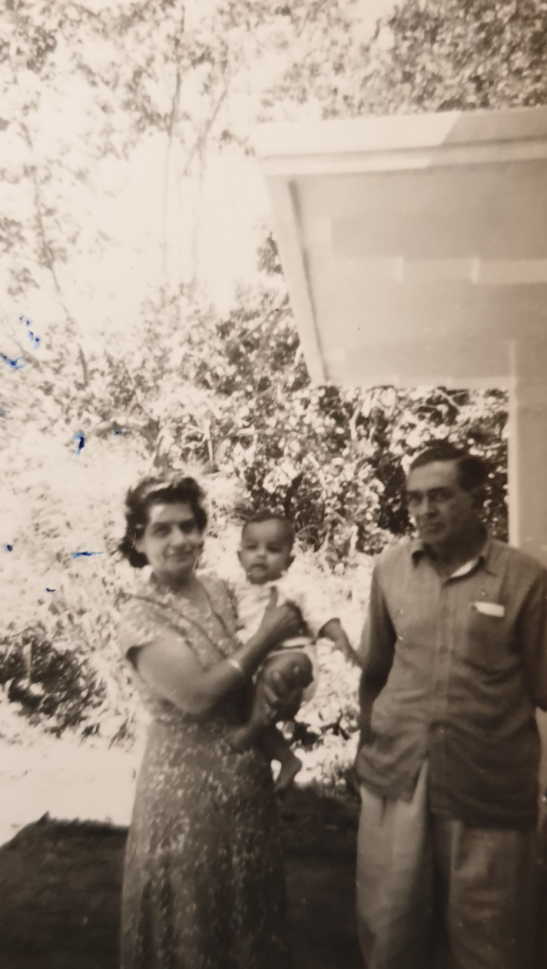
George and his wife in later years.
George Ernest Syms died aged 74 on 1st January 1964 aged 74 and Otellie died in 1977. I have included a photograph of them holding what looks like a grandchild in the folder courtesy of a Public member’s tree. Year unknown. It is definitely not their daughter Phyliis Joan’s child as he was born in 1945 and died in 1970. The photograph looks as if it could be late fifties/ early sixties. There is no evidence that either of the sons married and /or had children but a change of name spelling to Sims/Symms/Symmes has added a complication to the search for them.
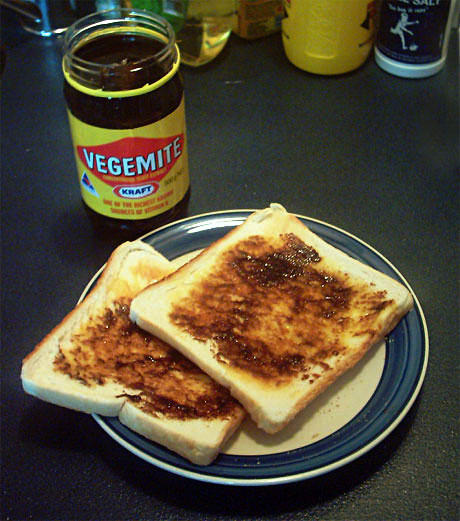
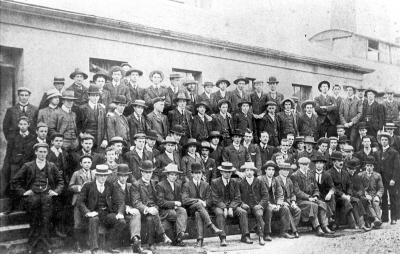
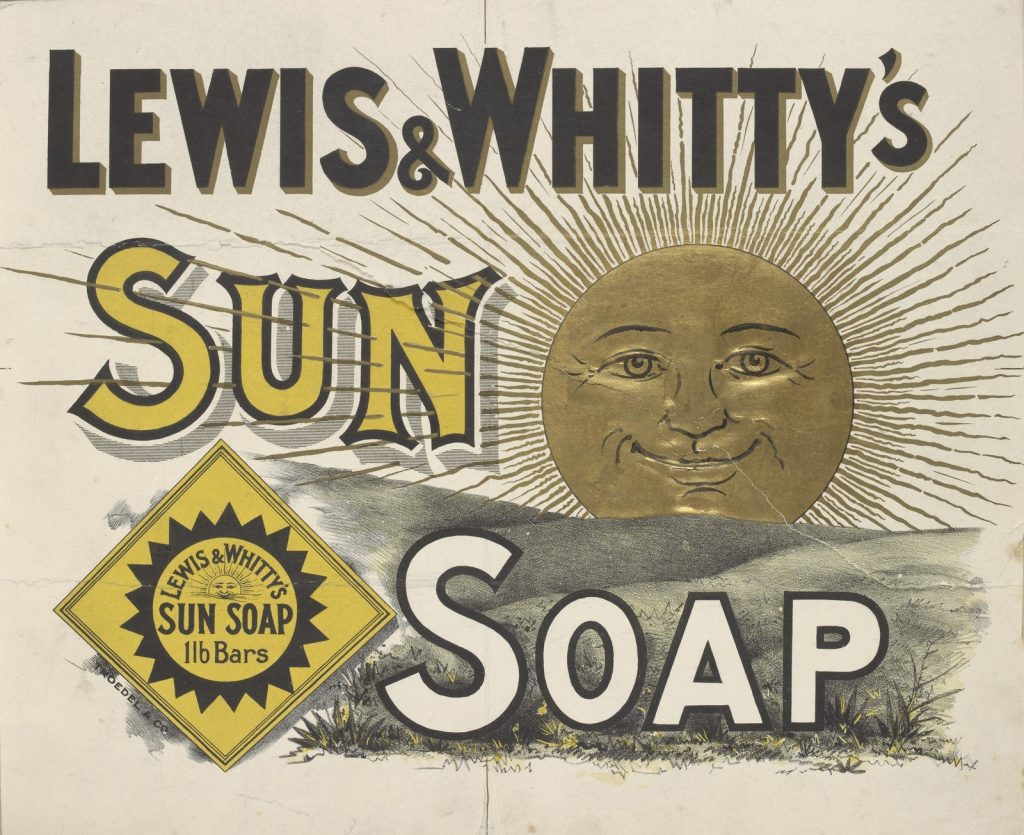
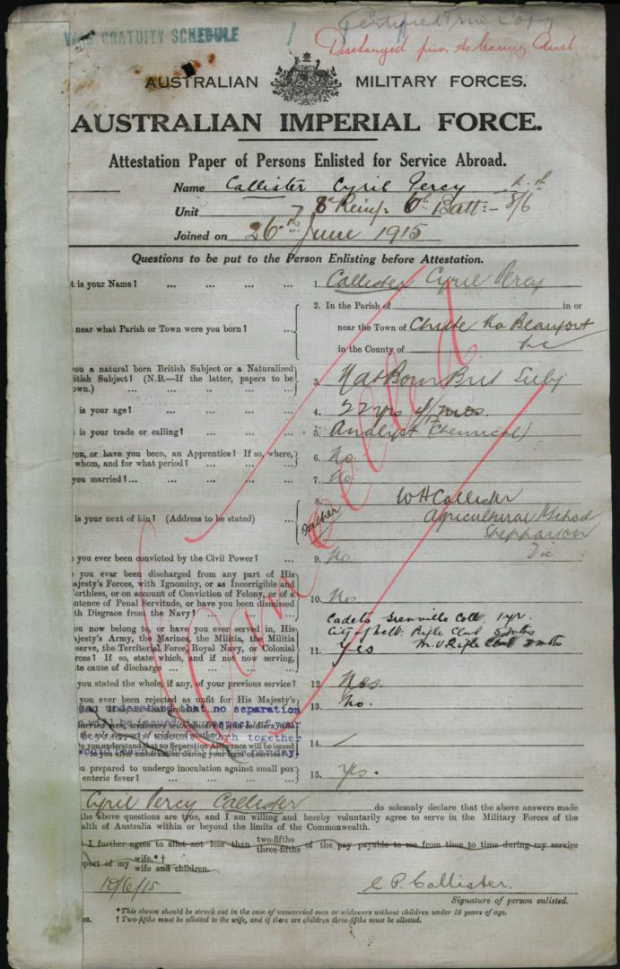
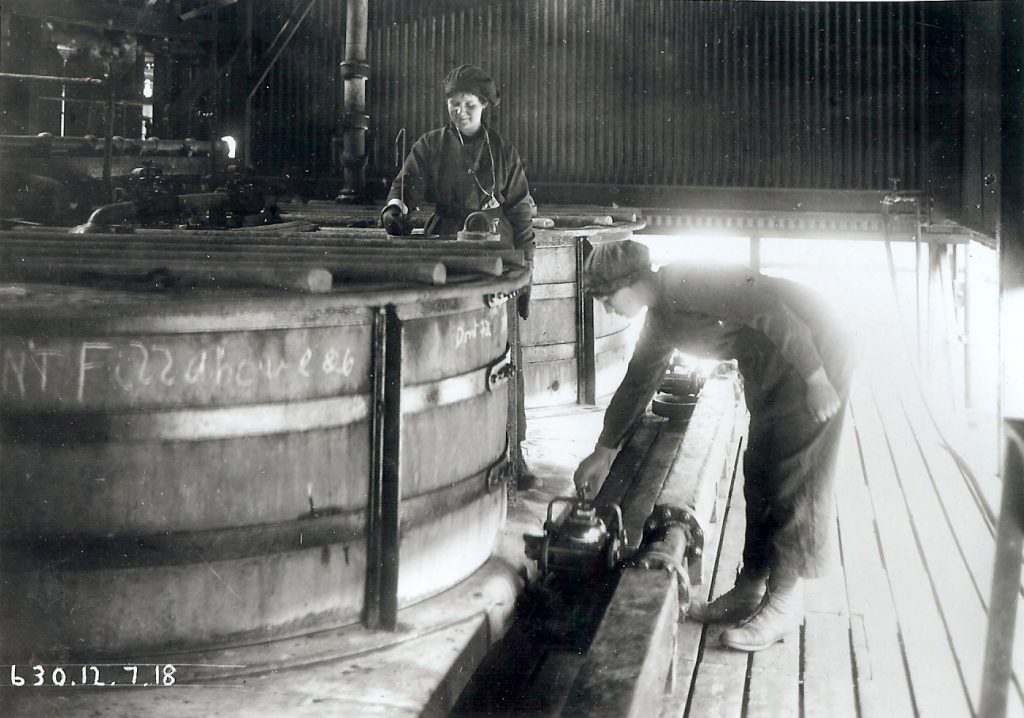

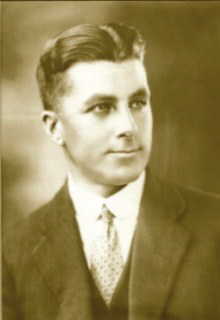
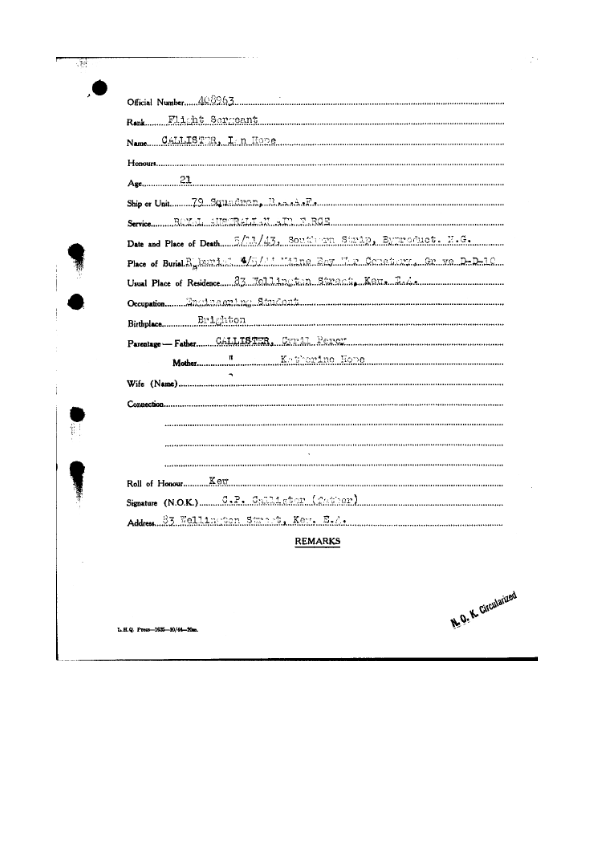

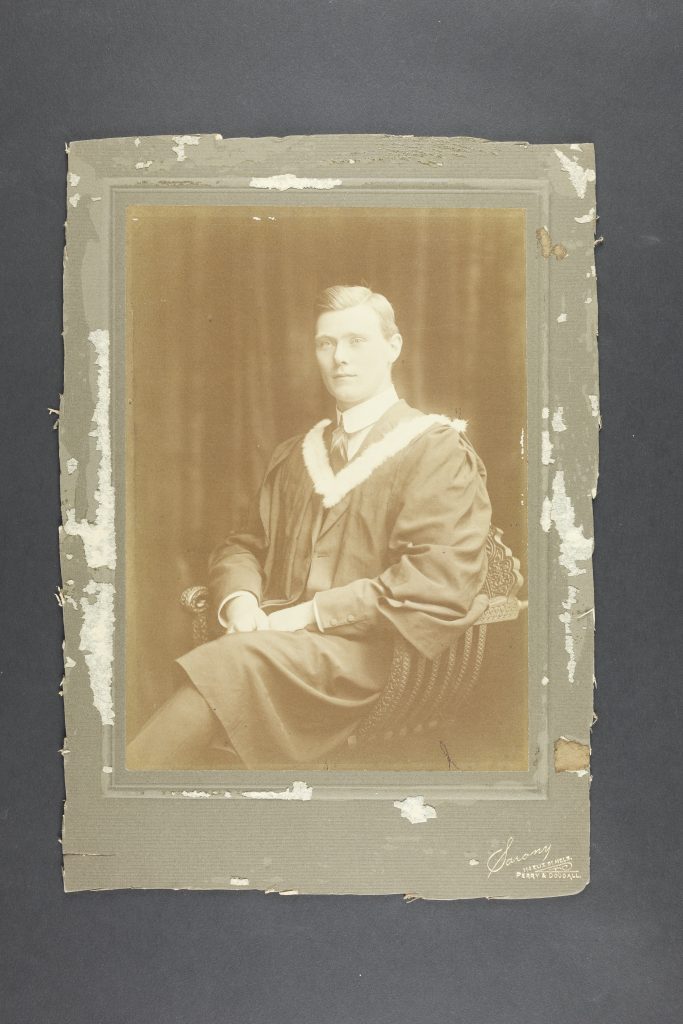
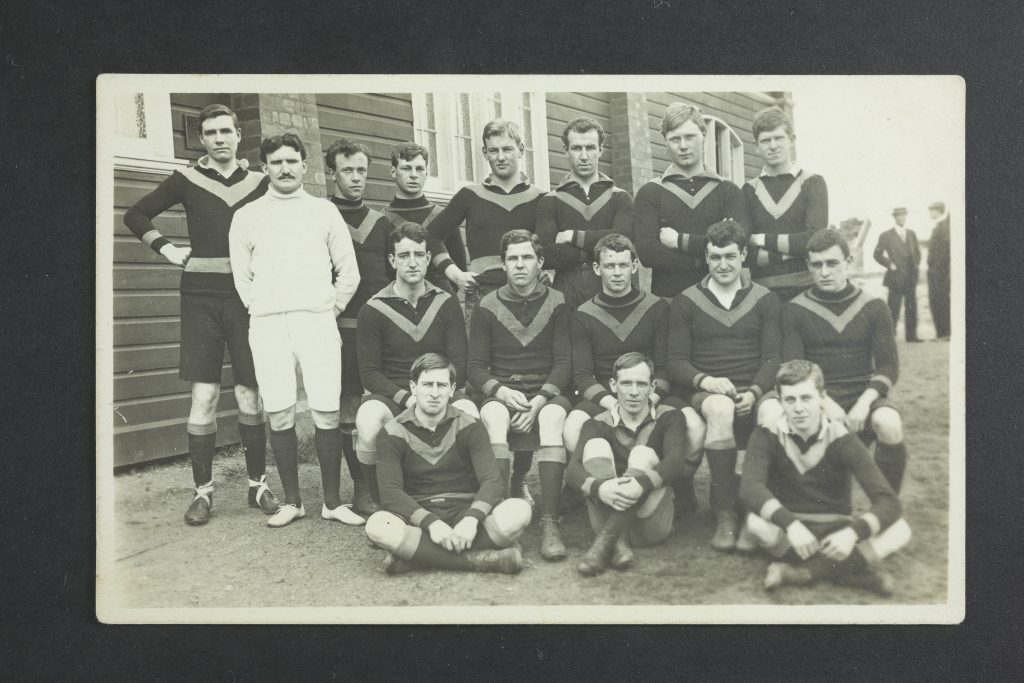
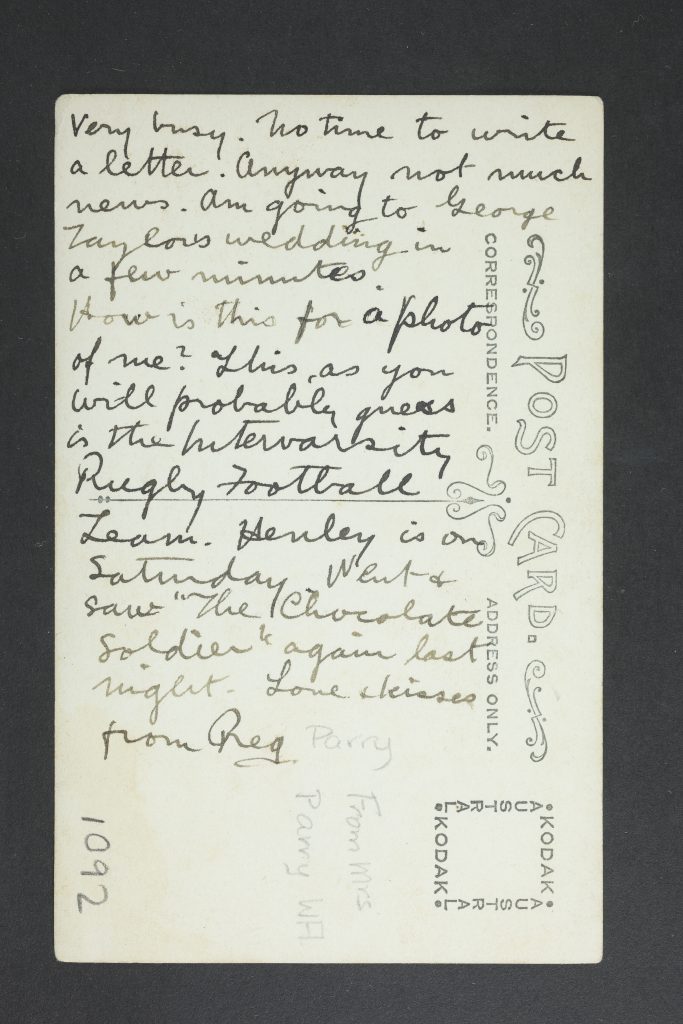
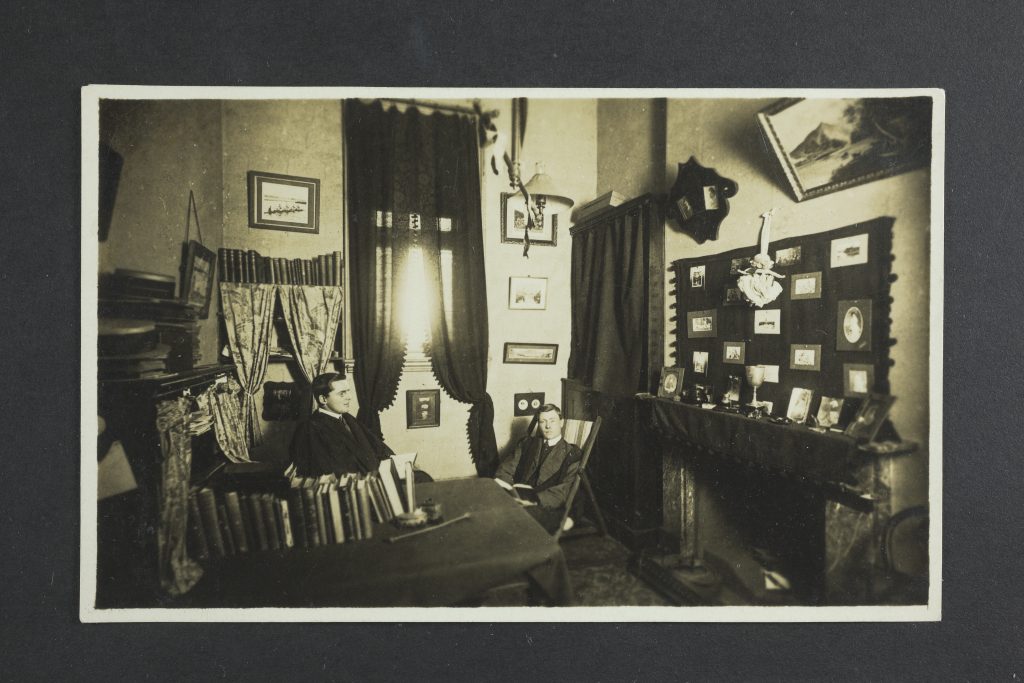
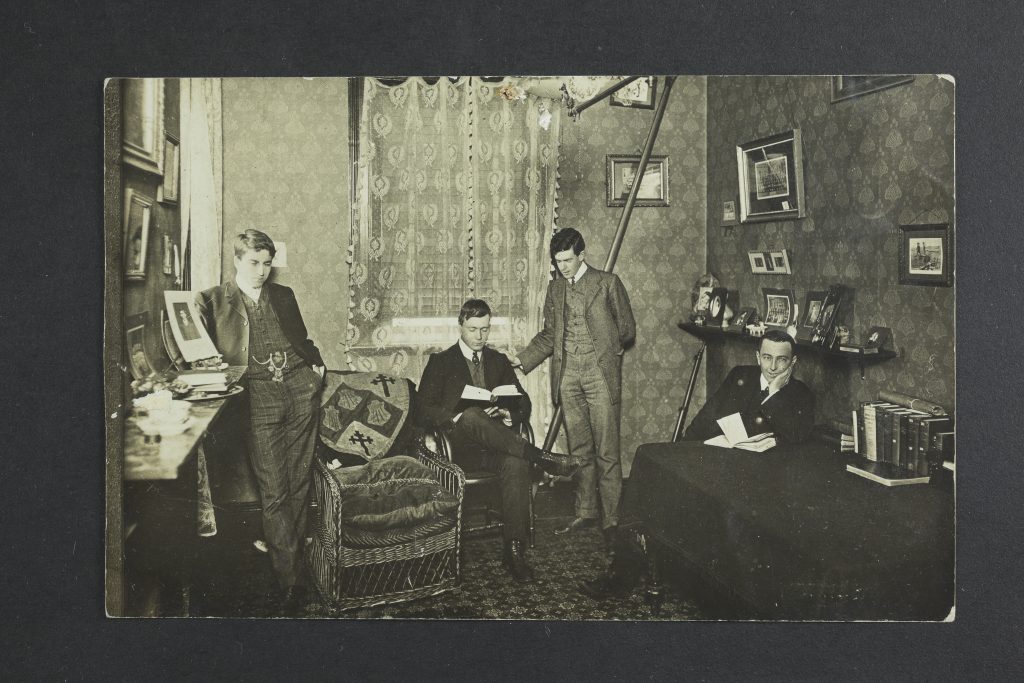
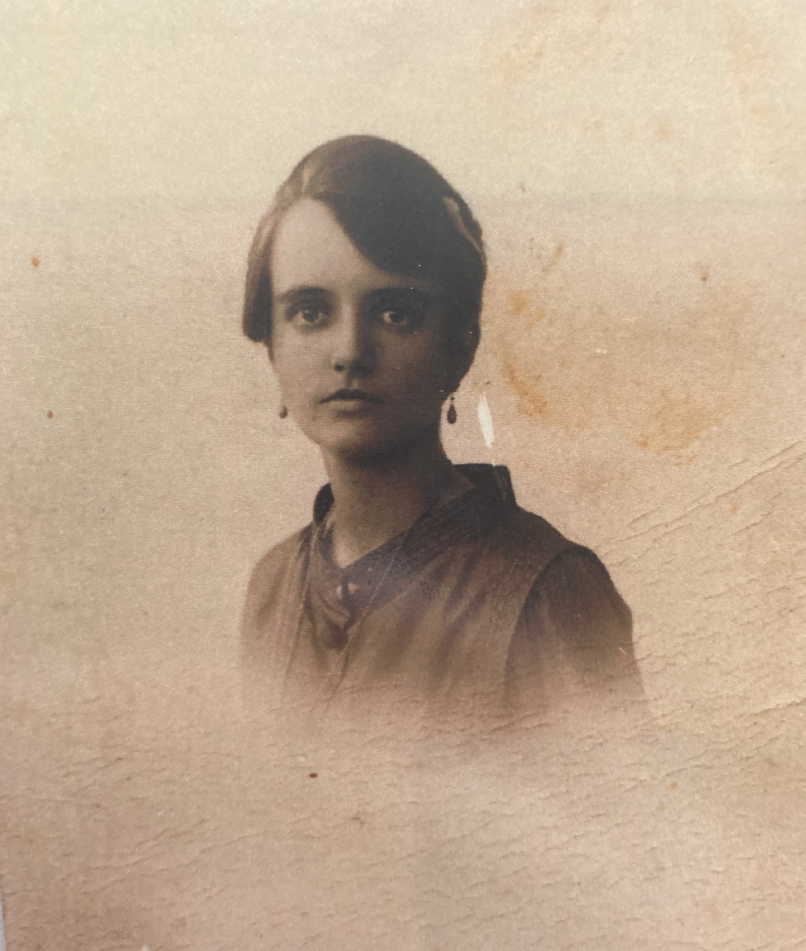
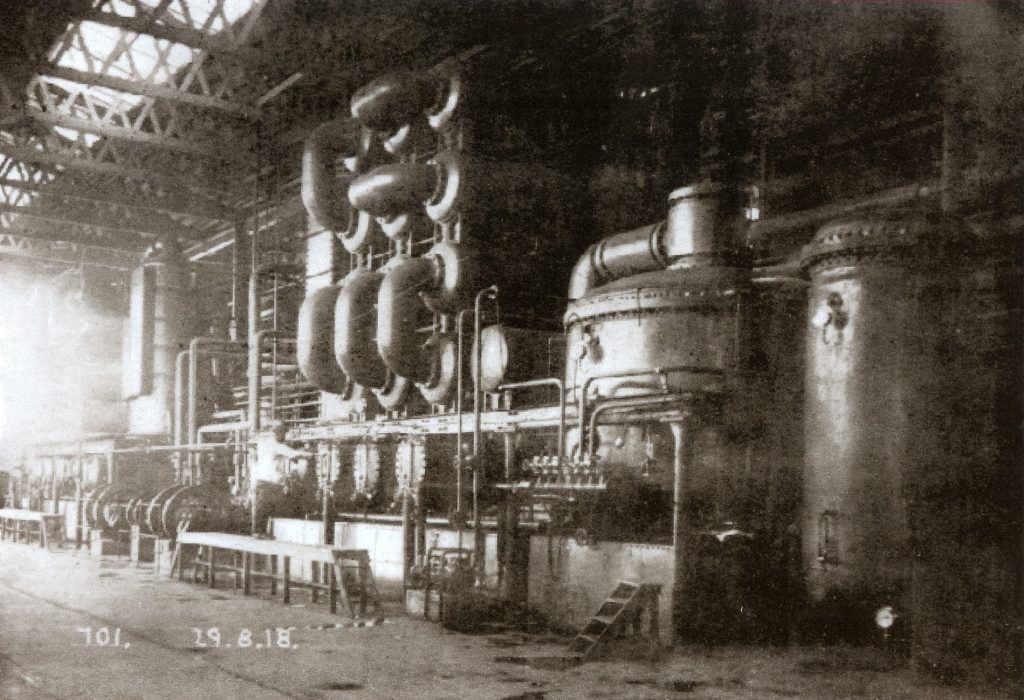
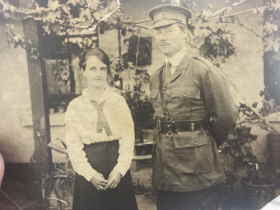
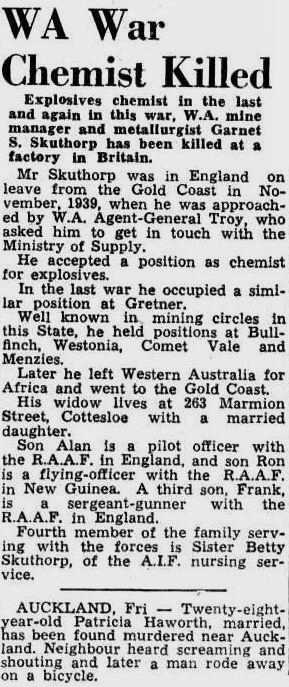
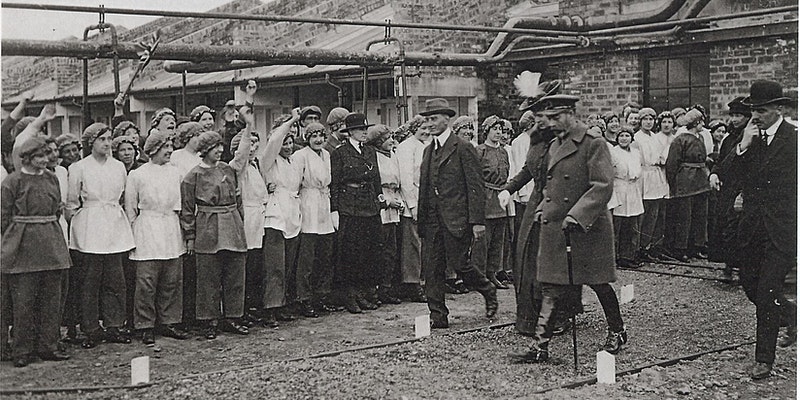
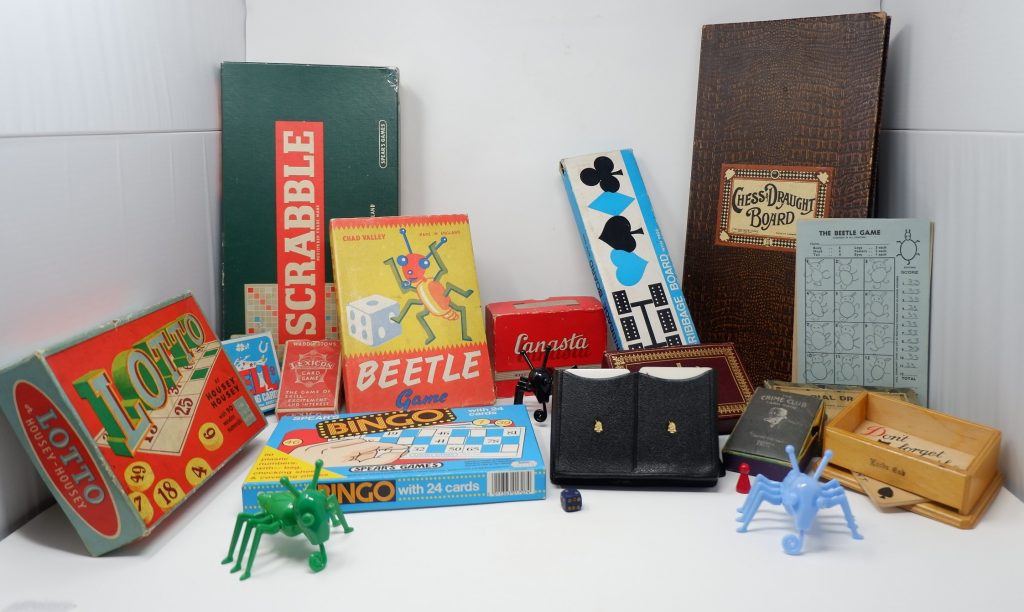

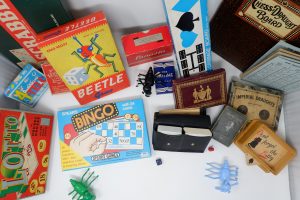
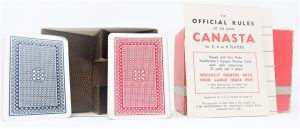
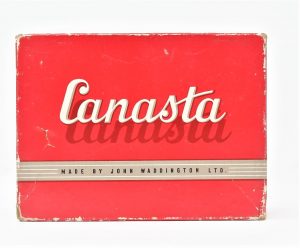
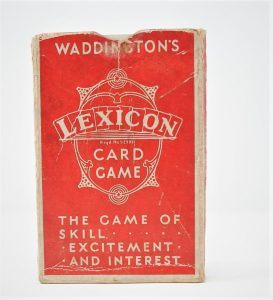

 The final game I researched was called Lotto or Housey Housey, and it turned out we also had a more modern version of the game which was named Bingo.
The final game I researched was called Lotto or Housey Housey, and it turned out we also had a more modern version of the game which was named Bingo.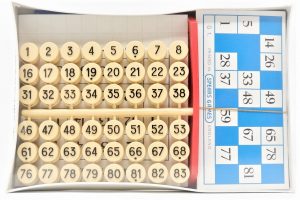
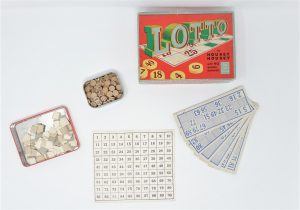
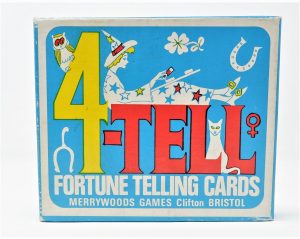

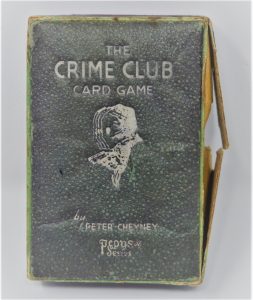
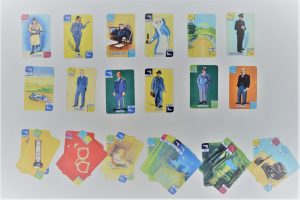
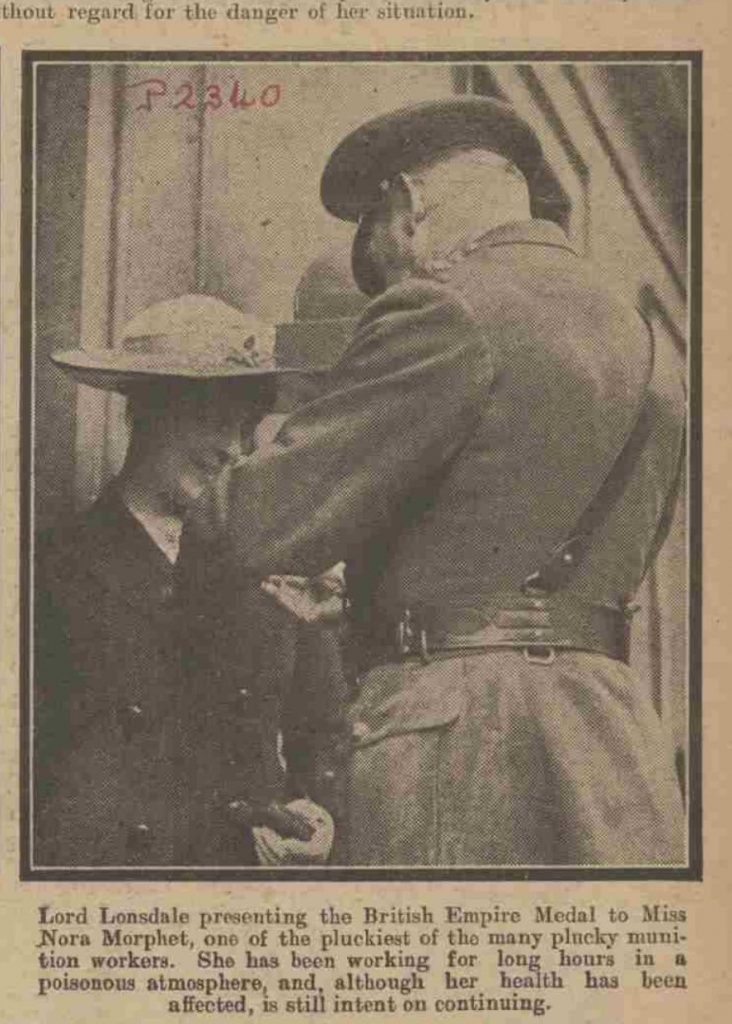
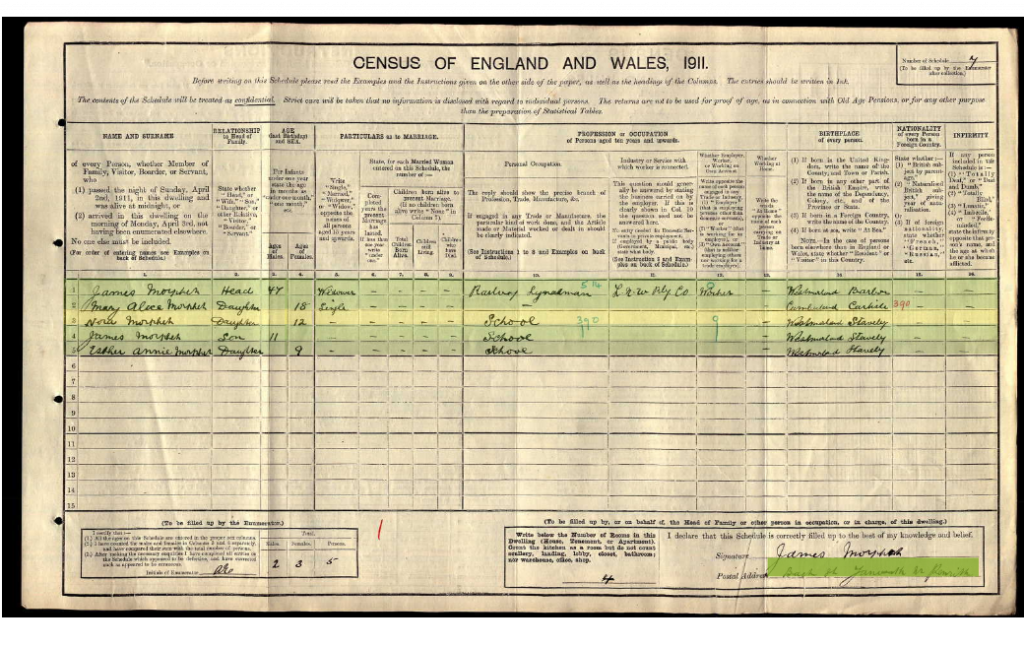 Ethel is to be found on a separate census return as a 15 year old servant for a miller and his wife at Morland ,Penrith.
Ethel is to be found on a separate census return as a 15 year old servant for a miller and his wife at Morland ,Penrith.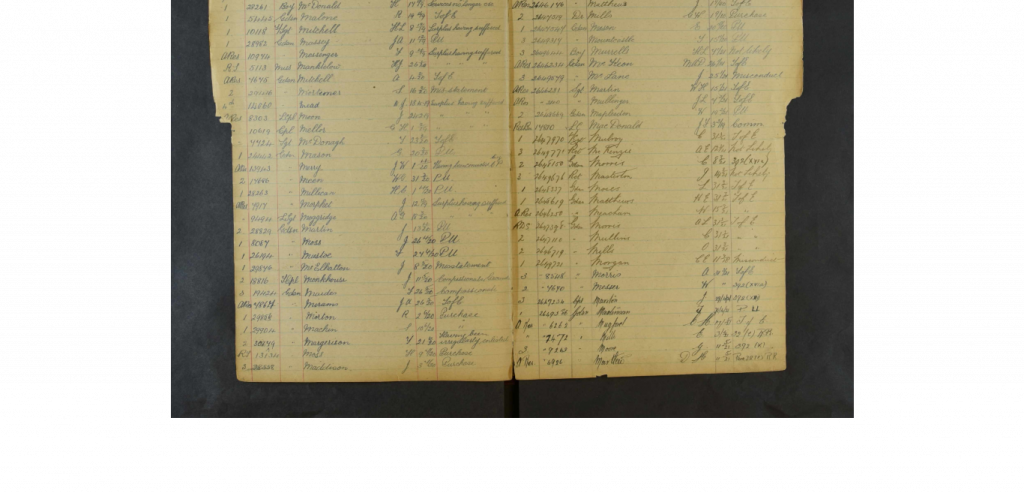

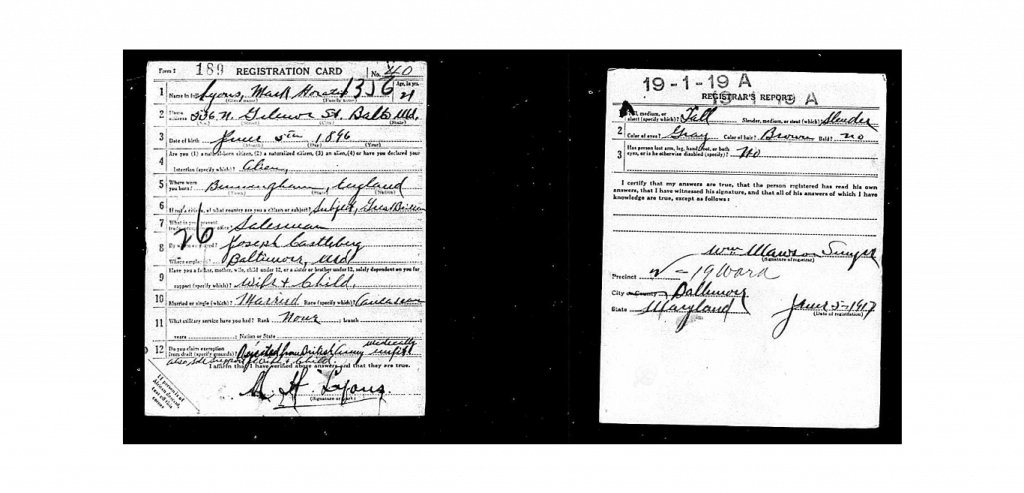
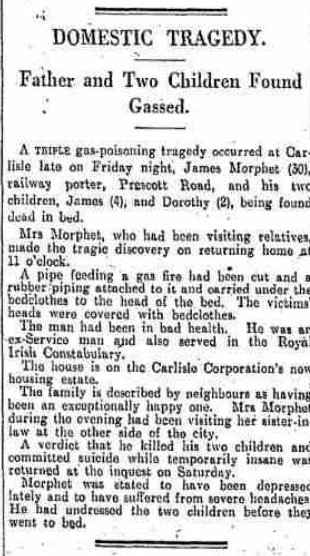
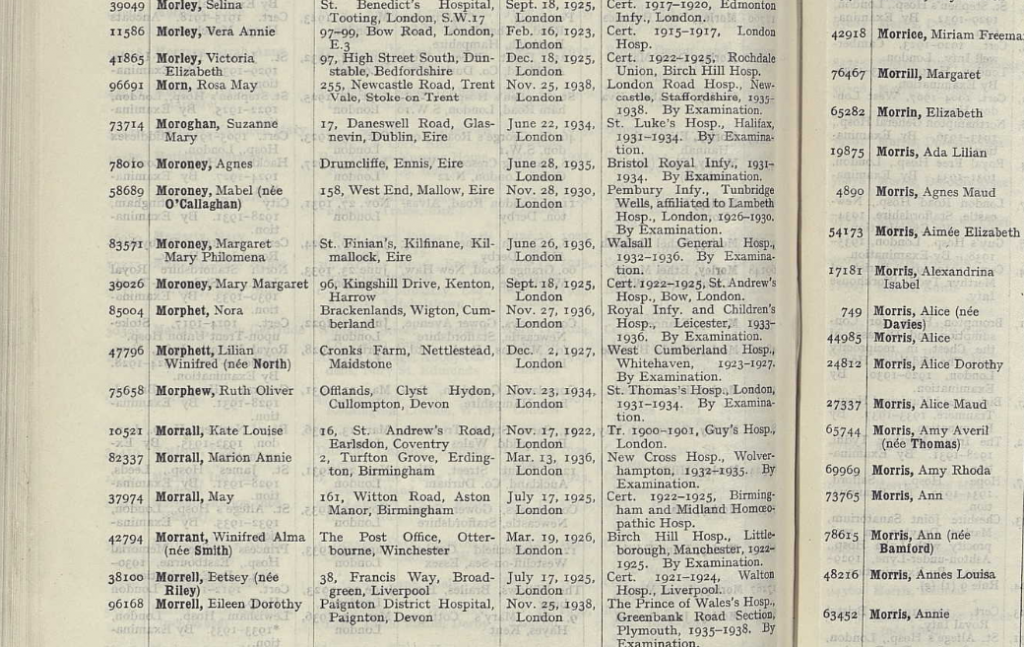 The 1937 Nursing register shows that Nora is back in Cumberland, living at 5 North Street, Maryport No trace of her can be found on the 1939 national register.
The 1937 Nursing register shows that Nora is back in Cumberland, living at 5 North Street, Maryport No trace of her can be found on the 1939 national register.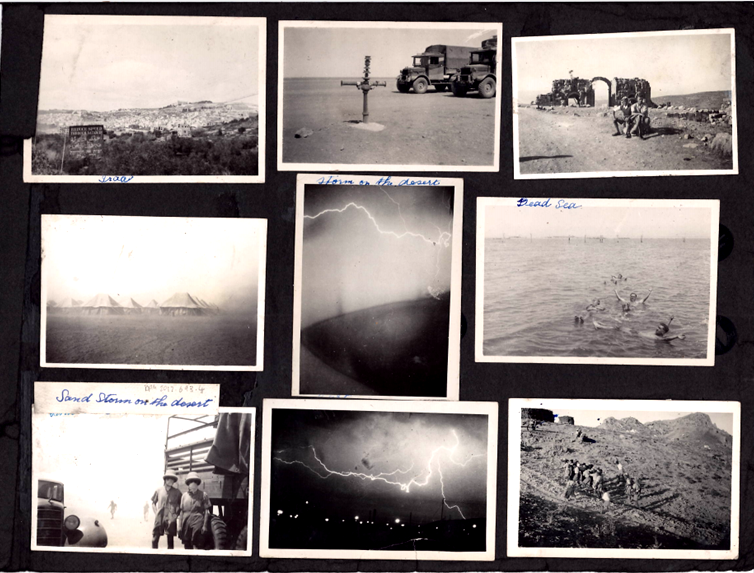
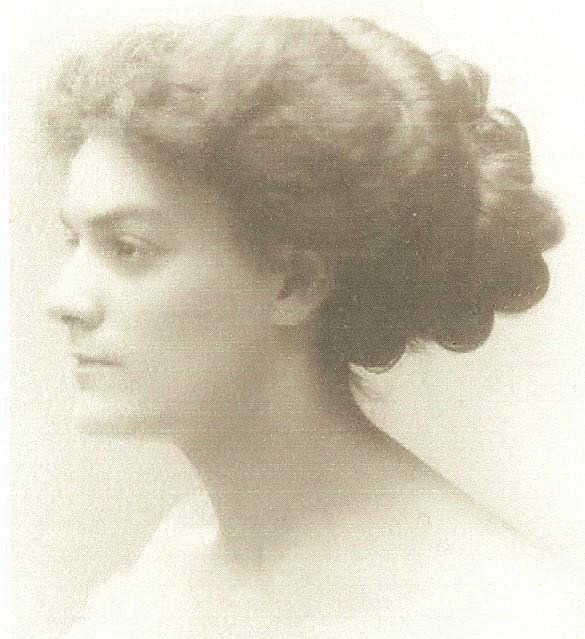
 Whether or not she actually did work at HM Factory Gretna, Madeline produced a very popular wartime poem about munition’s workers and their wages:
Whether or not she actually did work at HM Factory Gretna, Madeline produced a very popular wartime poem about munition’s workers and their wages:


 By 6
By 6